publications
Selected publications in reversed chronological order.
For a full list see this INSPIRE page.
2025
-
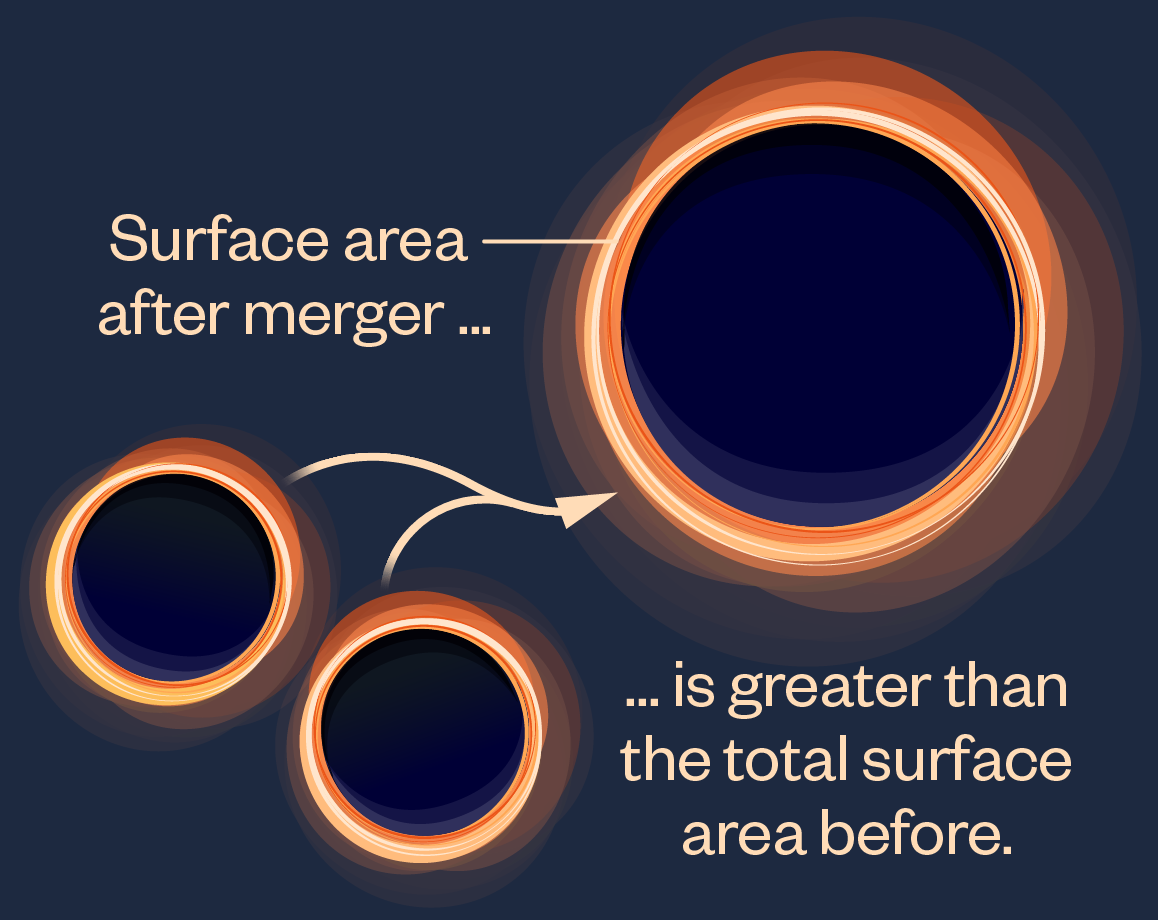 GW250114: Testing Hawking’s Area Law and the Kerr Nature of Black HolesA. G. Abac , and othersPhysical Review Letters, 2025
GW250114: Testing Hawking’s Area Law and the Kerr Nature of Black HolesA. G. Abac , and othersPhysical Review Letters, 2025 -
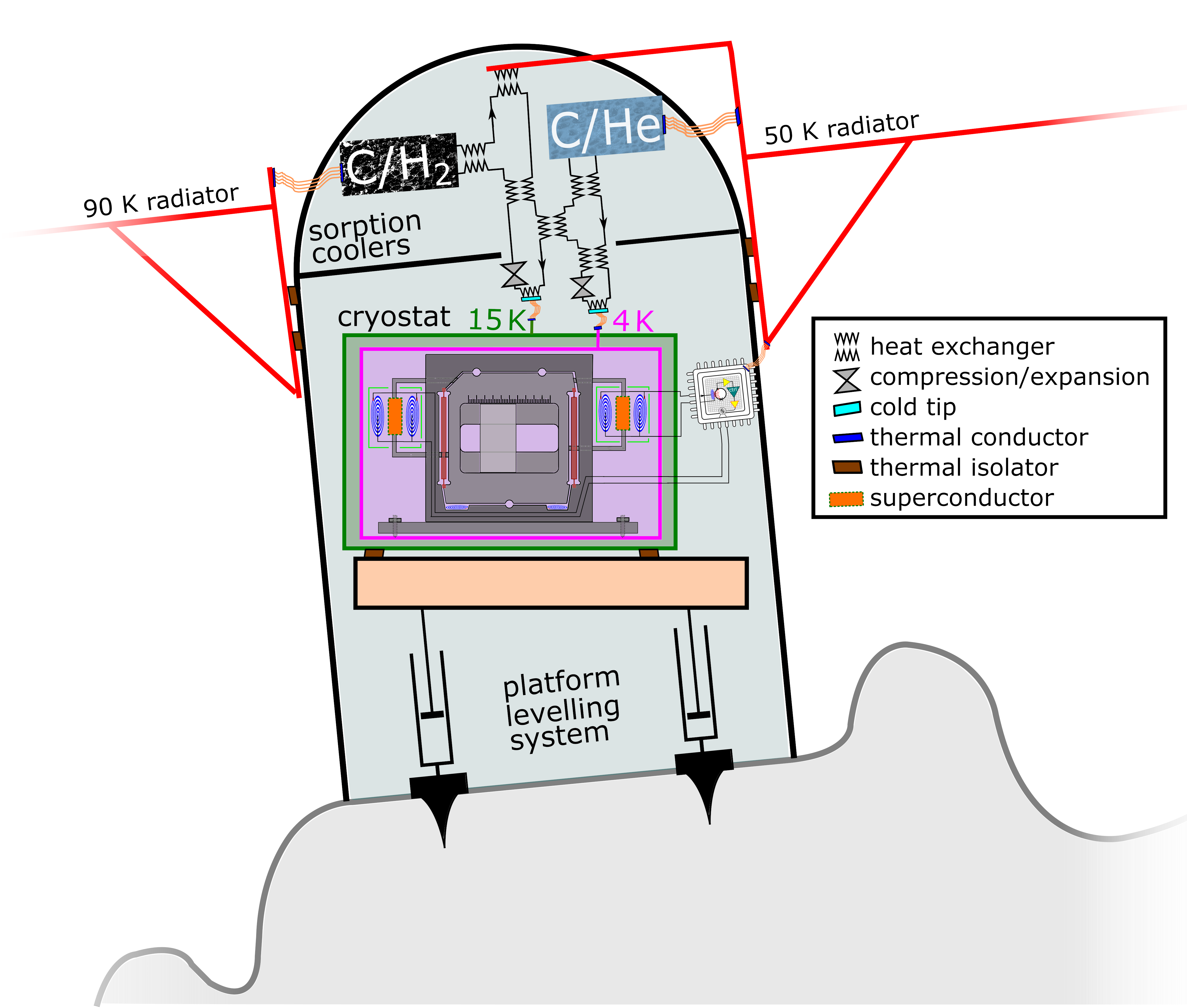 The Lunar Gravitational-wave Antenna: Mission Studies and Science CaseP. Ajith , and othersJ. Cosmol. Astropart. Phys., 2025
The Lunar Gravitational-wave Antenna: Mission Studies and Science CaseP. Ajith , and othersJ. Cosmol. Astropart. Phys., 2025The Lunar Gravitational-wave Antenna (LGWA) is a proposed array of next-generation inertial sensors to monitor the response of the Moon to gravitational waves (GWs). Given the size of the Moon and the expected noise produced by the lunar seismic background, the LGWA would be able to observe GWs from about 1 mHz to 1 Hz. This would make the LGWA the missing link between space-borne detectors like LISA with peak sensitivities around a few millihertz and proposed future terrestrial detectors like Einstein Telescope or Cosmic Explorer. In this article, we provide a first comprehensive analysis of the LGWA science case including its multi-messenger aspects and lunar science with LGWA data. We also describe the scientific analyses of the Moon required to plan the LGWA mission.
-
 Revisiting GW150914 with a Non-Planar, Eccentric Waveform ModelRossella Gamba , Jacob Lange , Danilo Chiaramello , Jacopo Tissino, and Snehal TibrewalClass. Quant. Grav., 2025
Revisiting GW150914 with a Non-Planar, Eccentric Waveform ModelRossella Gamba , Jacob Lange , Danilo Chiaramello , Jacopo Tissino, and Snehal TibrewalClass. Quant. Grav., 2025 -
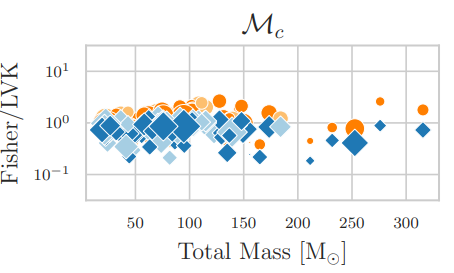 Validating Prior-informed Fisher-matrix Analyses against GWTC DataUlyana Dupletsa , Jan Harms , Ken K. Y. Ng , Jacopo Tissino, Filippo Santoliquido , and Andrea CozzumboPhys. Rev. D, 2025
Validating Prior-informed Fisher-matrix Analyses against GWTC DataUlyana Dupletsa , Jan Harms , Ken K. Y. Ng , Jacopo Tissino, Filippo Santoliquido , and Andrea CozzumboPhys. Rev. D, 2025Fisher-matrix methods are widely used to predict how accurately parameters can be estimated. Being computationally efficient, this approach is prompted by the large number of signals simulated in forecast studies for future gravitational-wave (GW) detectors, for which adequate analysis tools and computational resources are still unavailable to the scientific community. However, approximating the full likelihood function with a Gaussian may lead to inaccuracies, which we investigate in this work. To assess the accuracy of the Fisher approximation, we compare the results of the Fisher code GWFish against real data from the Gravitational Wave Transient Catalogs (GWTCs) provided by the Virgo/LIGO Bayesian analyses. Additionally, we present a sampling algorithm to include priors in GWFish, not only to ensure a fair comparison between GWFish results and the Virgo/LIGO posteriors but also to investigate the role of prior information and to assess the need to include it in standard Fisher analyses. We find that the impact of priors depends mostly on the level of signal-dependent degeneracy of the waveform parameterization, and priors are generally more important when the level of degeneracy is high. Our findings imply that Fisher-matrix methods are a valid tool for ET science-case studies.
-
 Inference with Finite Time Series II: The Window Strikes BackColm Talbot , Sylvia Biscoveanu , Aaron Zimmerman , Tomasz Baka , Will M. Farr , Jacob Golomb , Charlie Hoy , Andrew Lundgren , Jacopo Tissino, Michael J. Williams , and 2 more authors2025
Inference with Finite Time Series II: The Window Strikes BackColm Talbot , Sylvia Biscoveanu , Aaron Zimmerman , Tomasz Baka , Will M. Farr , Jacob Golomb , Charlie Hoy , Andrew Lundgren , Jacopo Tissino, Michael J. Williams , and 2 more authors2025Smooth window functions are often applied to strain data when inferring the parameters describing the astrophysical sources of gravitational-wave transients. Within the LIGO-Virgo-KAGRA collaboration, it is conventional to include a term to account for power loss due to this window in the likelihood function. We show that the inclusion of this factor leads to biased inference. The simplest solution to this, omitting the factor, leads to unbiased posteriors and Bayes factor estimates provided the window does not suppress the signal for signal-to-noise ratios ≲O(100), but unreliable estimates of the absolute likelihood. Instead, we propose a multi-stage method that yields consistent estimates for the absolute likelihood in addition to unbiased posterior distributions and Bayes factors for signal-to-noise ratios ≲O(1000). Additionally, we demonstrate that the commonly held wisdom that using rectangular windows necessarily leads to biased inference is incorrect.
-
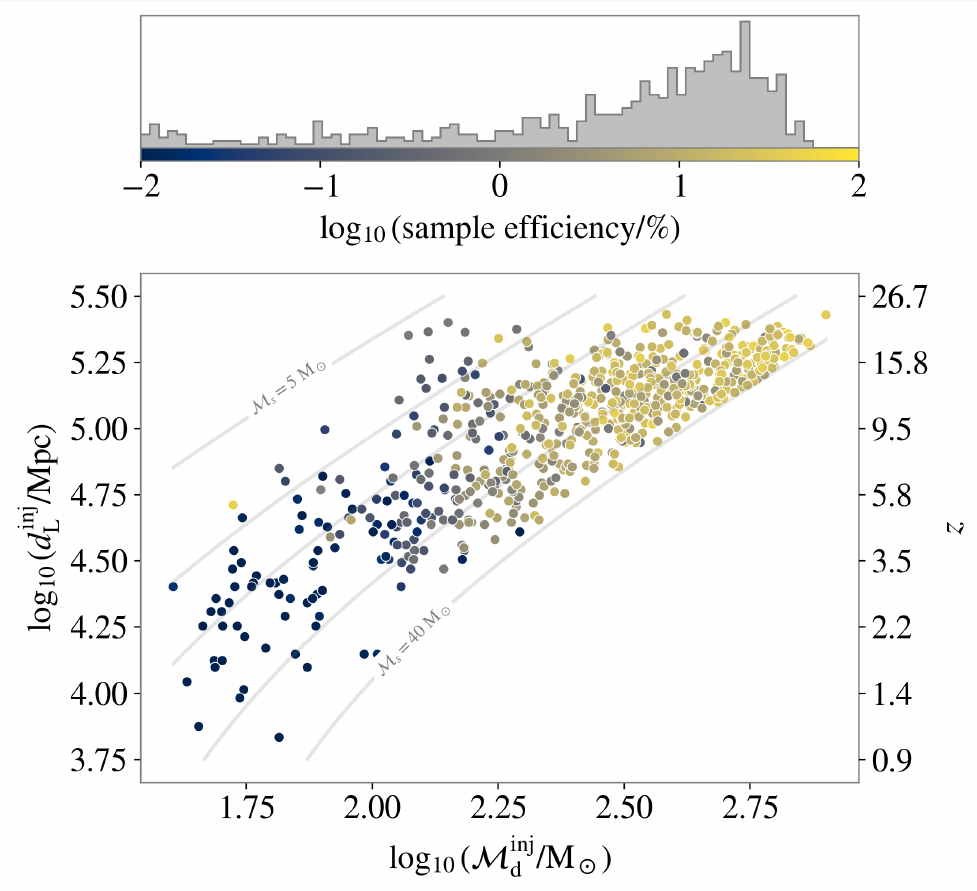 Fast and Accurate Parameter Estimation of High-Redshift Sources with the Einstein TelescopeFilippo Santoliquido , Jacopo Tissino, Ulyana Dupletsa , Marica Branchesi , Jan Harms , Manuel Arca Sedda , Maximilian Dax , Annalena Kofler , Stephen R. Green , Nihar Gupte , and 2 more authors2025
Fast and Accurate Parameter Estimation of High-Redshift Sources with the Einstein TelescopeFilippo Santoliquido , Jacopo Tissino, Ulyana Dupletsa , Marica Branchesi , Jan Harms , Manuel Arca Sedda , Maximilian Dax , Annalena Kofler , Stephen R. Green , Nihar Gupte , and 2 more authors2025The Einstein Telescope (ET), along with other third-generation gravitational wave (GW) detectors, will be a key instrument for detecting GWs in the coming decades. However, analyzing the data and estimating source parameters will be challenging, especially given the large number of expected detections - of order 10000 per year - which makes current methods based on stochastic sampling impractical. In this work, we use Dingo-IS to perform Neural Posterior Estimation (NPE) of high-redshift events detectable with ET in its triangular configuration. NPE is a likelihood-free inference technique that leverages normalizing flows to approximate posterior distributions. After training, inference is fast, requiring only a few minutes per source, and accurate, as corrected through importance sampling and validated against standard Bayesian inference methods. To confirm previous findings on the ability to estimate parameters for high-redshift sources with ET, we compare NPE results with predictions from the Fisher information matrix (FIM) approximation. We find that FIM underestimates sky localization errors substantially for most sources, as it does not capture the multimodalities in sky localization introduced by the geometry of the triangular detector. FIM also overestimates the uncertainty in luminosity distance by a factor of 3 on average when the injected luminosity distance is greater than 100Gpc, further confirming that ET will be particularly well suited for studying the early Universe.
2024
-
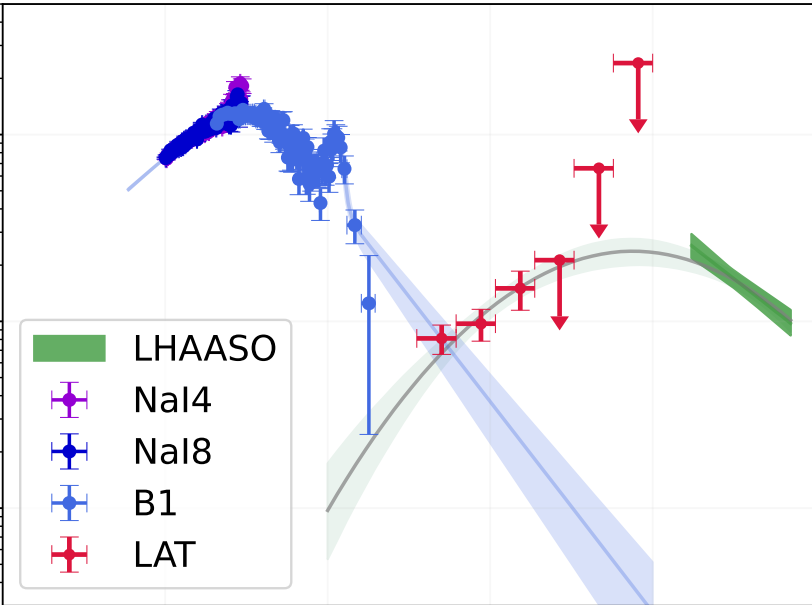 Camelidae on BOAT: Observation of a Second Spectral Component in GRB 221009ABiswajit Banerjee , Samanta Macera , Alessio Ludovico De Santis , Alessio Mei , Jacopo Tissino, Gor Oganesyan , Dmitry D. Frederiks , Alexandra L. Lysenko , Dmitry S. Svinkin , Anastasia E. Tsvetkova , and 1 more authorAstron.Astrophys., 2024
Camelidae on BOAT: Observation of a Second Spectral Component in GRB 221009ABiswajit Banerjee , Samanta Macera , Alessio Ludovico De Santis , Alessio Mei , Jacopo Tissino, Gor Oganesyan , Dmitry D. Frederiks , Alexandra L. Lysenko , Dmitry S. Svinkin , Anastasia E. Tsvetkova , and 1 more authorAstron.Astrophys., 2024Observing and understanding the origin of the very-high-energy (VHE) spectral component in gamma-ray bursts (GRBs) has been challenging because of the lack of sensitivity in MeV-GeV observations, so far. The majestic GRB 221009A, known as the brightest of all times (BOAT), offers a unique opportunity to identify spectral components during the prompt and early afterglow phases and probe their origin. Analyzing simultaneous observations spanning from keV to TeV energies, we identified two distinct spectral components during the initial 20 minutes of the burst. The second spectral component peaks between \10-300 GeV, and the bolometric fluence (10 MeV-10 TeV) is estimated to be greater than 2\\times10^{-3} erg/ cm\^{2}\. Performing broad-band spectral modeling, we provide constraints on the magnetic field and the energies of electrons accelerated in the external relativistic shock. We interpret the VHE component as an afterglow emission that is affected by luminous prompt MeV radiation at early times.
-
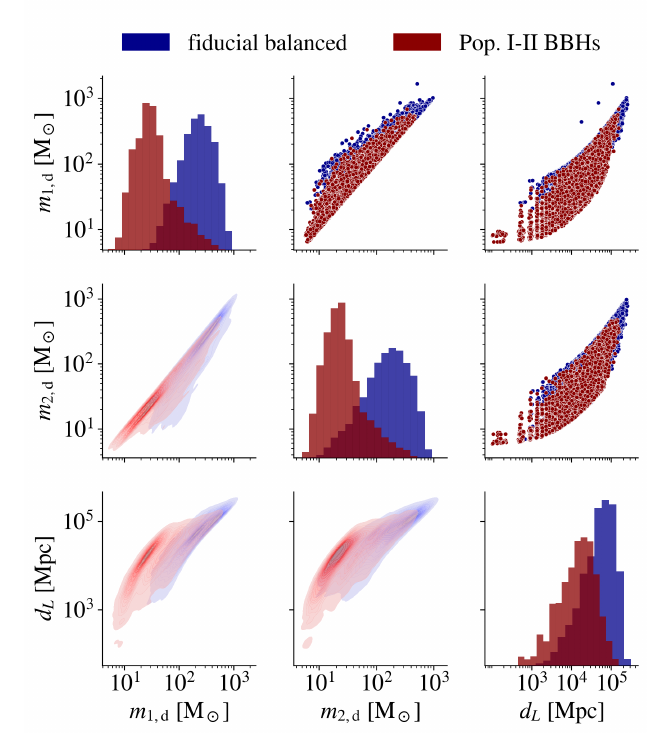 Classifying Binary Black Holes from Population III Stars with the Einstein Telescope: A Machine-Learning ApproachFilippo Santoliquido , Ulyana Dupletsa , Jacopo Tissino, Marica Branchesi , Francesco Iacovelli , Giuliano Iorio , Michela Mapelli , Davide Gerosa , Jan Harms , and Mario PasquatoAstronomy and Astrophysics, 2024
Classifying Binary Black Holes from Population III Stars with the Einstein Telescope: A Machine-Learning ApproachFilippo Santoliquido , Ulyana Dupletsa , Jacopo Tissino, Marica Branchesi , Francesco Iacovelli , Giuliano Iorio , Michela Mapelli , Davide Gerosa , Jan Harms , and Mario PasquatoAstronomy and Astrophysics, 2024Third-generation (3G) gravitational-wave detectors such as the Einstein Telescope (ET) will observe binary black hole (BBH) mergers at redshifts up to \z∼100\. However, an unequivocal determination of the origin of high-redshift sources will remain uncertain because of the low signal-to-noise ratio (S/N) and poor estimate of their luminosity distance. This study proposes a machine-learning approach to infer the origins of high-redshift BBHs. We specifically differentiate those arising from Population III (Pop. III) stars, which probably are the first progenitors of star-born BBH mergers in the Universe, and those originated from Population I-II (Pop. I-II) stars. We considered a wide range of models that encompass the current uncertainties on Pop. III BBH mergers. We then estimated the parameter errors of the detected sources with ET using the Fisher information-matrix formalism, followed by a classification using XGBoost, which is a machine-learning algorithm based on decision trees. For a set of mock observed BBHs, we provide the probability that they belong to the Pop. III class while considering the parameter errors of each source. In our fiducial model, we accurately identify more than 10% of the detected BBHs that originate from Pop. III stars with a precision greater than 90%. Our study demonstrates that machine-learning enables us to achieve some pivotal aspects of the ET science case by exploring the origin of individual high-redshift GW observations. We set the basis for further studies, which will integrate additional simulated populations and account for further uncertainties in the population modeling.
2023
-
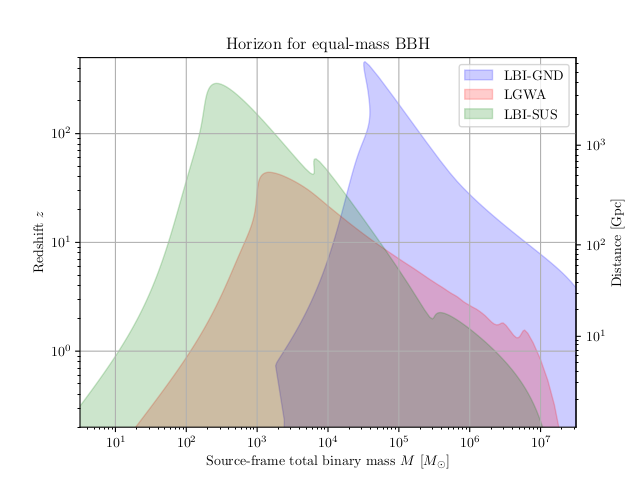 Opportunities and Limits of Lunar Gravitational-Wave DetectionAndrea Cozzumbo , Benedetta Mestichelli , Marco Mirabile , Lavinia Paiella , Jacopo Tissino, and Jan HarmsPhilosophical Transactions A, 2023
Opportunities and Limits of Lunar Gravitational-Wave DetectionAndrea Cozzumbo , Benedetta Mestichelli , Marco Mirabile , Lavinia Paiella , Jacopo Tissino, and Jan HarmsPhilosophical Transactions A, 2023A new era of lunar exploration has begun with participation of all major space agencies. This activity brings opportunities for revolutionary science experiments and observatories on the Moon. The idea of a lunar gravitational-wave detector was already proposed during the Apollo program. The key characteristic of the Moon is that it is seismically extremely quiet. It was also pointed out that the permanently shadowed regions at the lunar poles provide ideal conditions for gravitational-wave detection. In recent years, three different detector concepts were proposed with varying levels of technological complexity and science potential. In this paper, we confront the three concepts in terms of their observational capabilities based on a first more detailed modeling of instrumental noise. We identify important technological challenges and potential show-stoppers.
@article{cozzumboOpportunitiesLimitsLunar2023, title = {Opportunities and Limits of Lunar Gravitational-Wave Detection}, author = {Cozzumbo, Andrea and Mestichelli, Benedetta and Mirabile, Marco and Paiella, Lavinia and Tissino, Jacopo and Harms, Jan}, year = {2023}, date = {2023}, eprint = {2309.15160}, eprinttype = {arxiv}, journal = {Philosophical Transactions A}, eprintclass = {astro-ph, physics:gr-qc, physics:physics}, doi = {10.48550/arXiv.2309.15160}, url = {http://arxiv.org/abs/2309.15160}, urldate = {2023-09-28}, keywords = {Astrophysics - Instrumentation and Methods for Astrophysics,General Relativity and Quantum Cosmology,Physics - Instrumentation and Detectors} } -
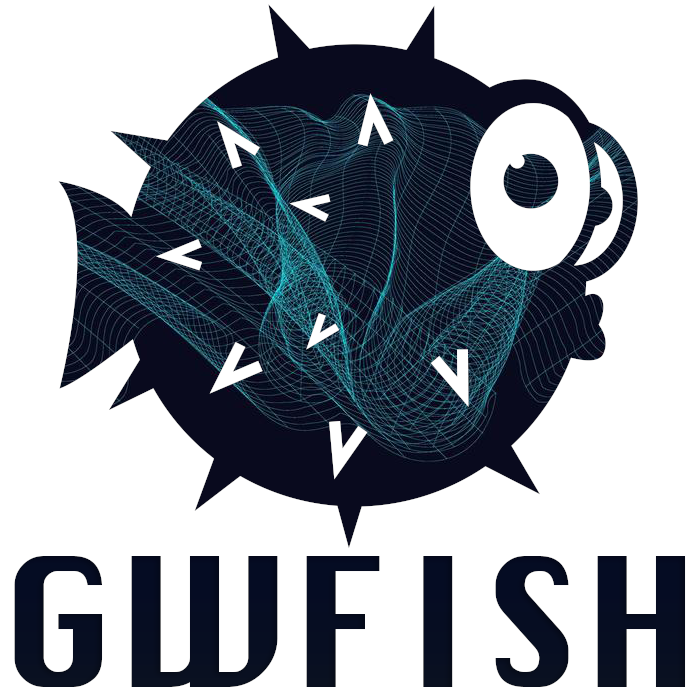 Gwfish: A Simulation Software to Evaluate Parameter-Estimation Capabilities of Gravitational-Wave Detector NetworksU. Dupletsa , J. Harms , B. Banerjee , M. Branchesi , B. Goncharov , A. Maselli , A. C. S. Oliveira , S. Ronchini , and J. TissinoAstronomy and Computing, 2023
Gwfish: A Simulation Software to Evaluate Parameter-Estimation Capabilities of Gravitational-Wave Detector NetworksU. Dupletsa , J. Harms , B. Banerjee , M. Branchesi , B. Goncharov , A. Maselli , A. C. S. Oliveira , S. Ronchini , and J. TissinoAstronomy and Computing, 2023An important step in the planning of future gravitational-wave (GW) detectors and of the networks they will form is the estimation of their detection and parameter-estimation capabilities, which is the basis of science-case studies. Several future GW detectors have been proposed or are under development, which might also operate and observe in parallel. These detectors include terrestrial, lunar, and space-borne detectors. In this paper, we present gwfish,11github.com/janosch314/GWFish. a new software to simulate GW detector networks and to calculate measurement uncertainties based on the Fisher-matrix approximation. gwfish models the impact of detector motion on PE and makes it possible to analyze multiband scenarios, i.e., observation of a GW signal by different detectors in different frequency bands. We showcase a few examples for the Einstein Telescope (ET) including the sky-localization of binary neutron stars, and ET’s capability to measure the polarization of GWs.
-
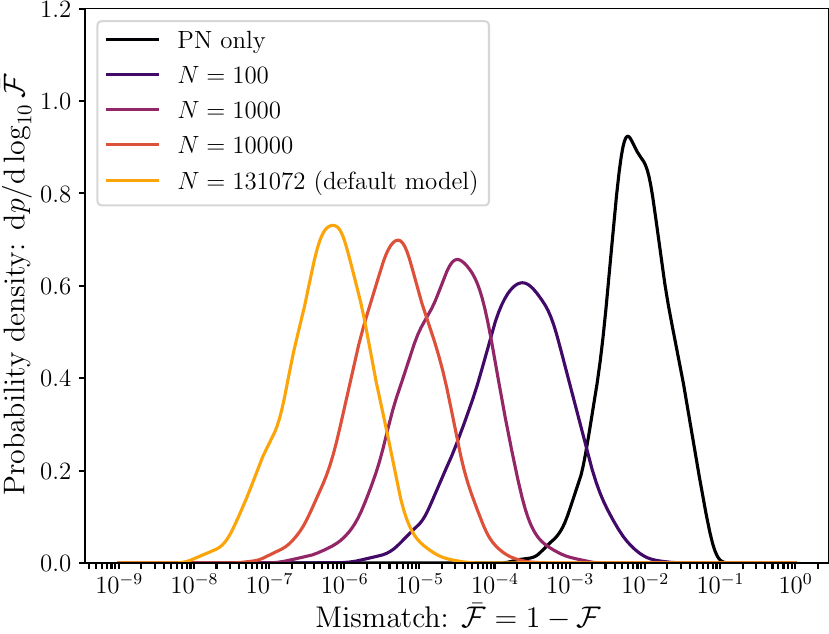 Combining Effective-One-Body Accuracy and Reduced-Order-Quadrature Speed for Binary Neutron Star Merger Parameter Estimation with Machine LearningJacopo Tissino, Gregorio Carullo , Matteo Breschi , Rossella Gamba , Stefano Schmidt , and Sebastiano BernuzziPhysical Review D, 2023
Combining Effective-One-Body Accuracy and Reduced-Order-Quadrature Speed for Binary Neutron Star Merger Parameter Estimation with Machine LearningJacopo Tissino, Gregorio Carullo , Matteo Breschi , Rossella Gamba , Stefano Schmidt , and Sebastiano BernuzziPhysical Review D, 2023We present mlgw-bns, a gravitational waveform surrogate that allows for a significant improvement in the generation speed of frequency-domain waveforms for binary neutron star mergers, at a negligible cost in accuracy. This improvement is achieved by training a machine-learning model on a dataset of waveforms generated with an accurate but comparatively costlier approximant: the state-of-the-art effective-one-body model TEOBResumSPA. When coupled to a reduced-order scheme, mlgw-bns can accelerate waveform generation up to a factor of ~35. By analyzing GW170817 in realistic parameter estimation settings with our scheme, we showcase an overall speedup against TEOBResumSPA greater than an order of magnitude. Our methodology will bear its largest impact by allowing routine usage of accurate effective-one-body models with next-generation detectors.